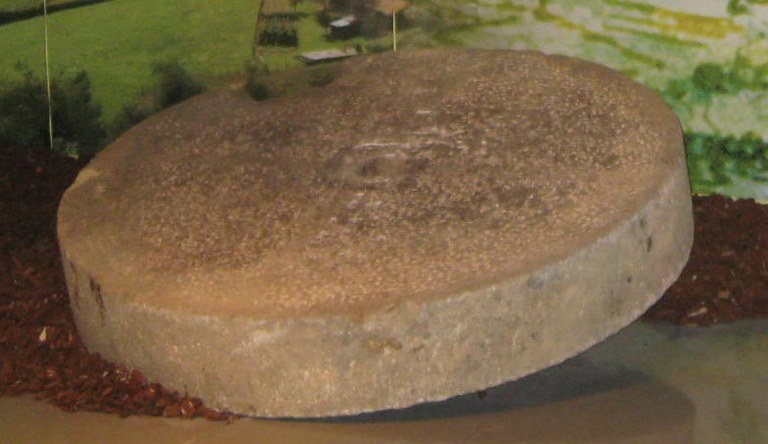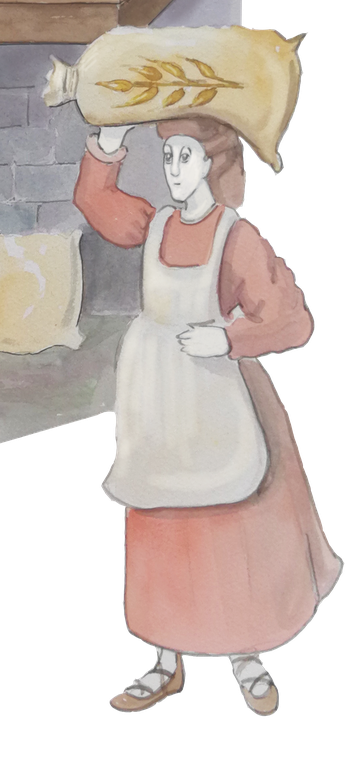Millstone

At the end of the 18th century, this mill had four pairs of grinding stones and three spare stones. A century before, the miller was María López de Insausti.
The grinding wheels of the mills were arranged in pairs attached to the runners that were in contact with the force of the water. The lower stone is called solera and the upper stone was the volandera. They form an indispensable piece to grind wheat and other cereals and thus obtain flour. The grain came to them from the upper deposits or hoppers. Each of the stones has a weight of 800 kilos, almost a ton of sandstone. The stones were carved near the quarry and for this they needed between 7 and 10 days. Its useful life was 15 to 20 years and the cost, in the 16th-17th century, was equivalent to a couple of oxen or to retejar an entire farmhouse.
(...) to serve yourself well and have abundant çebera mills, you need two girls, one for the mill and the other to bring and carry the çurrones (...)
Juana de Ançuriçaga, called Urdina 15th century

Women millers in Eibar
Women actively worked in the milling industry in Eibar throughout the centuries. The women were owners, they directed the transformation of the grain, they skillfully took care of the work of transport, loading and unloading of the sacks and they ground with expertise preventing the bran or zaixa from falling into the flour. They also frequently dealt with the kneading, baking and subsequent sale of bread. The bakers guaranteed the supply to the population, subject to severe council regulations.
Stop grinding, oh women who work in the mill. Keep sleeping, even if the roosters sing the arrival of dawn. Demeter has ordered the water nymphs to do your homework for you. Jumping on the wheel, they turn the axle that moves the large crushing stones.
Antipater of Thessalonica (1st century AD)
The list of Eibar millers is long:
Mayor Manrique de Arteaga, Juana de Ançuriçaga (Urdina), María Pérez de Iturrita, Marina Guevara, Francisca Zenarruza, María López de Insausti, Agustina Ascargorta, Agustina Paguegui, Catalina Bizcalarra, Catalina and María Antonia Isasi, Marina Cutuneguieta, María Engracia Mingolarra, Sancha de Yrarragorria, María Joan de Aldasa, Teresa Beltran de Ybarra…..
Esaerak euskaraz
Errota onari bia - Al molino bueno la molienda
Balizko errotak irinik ez

